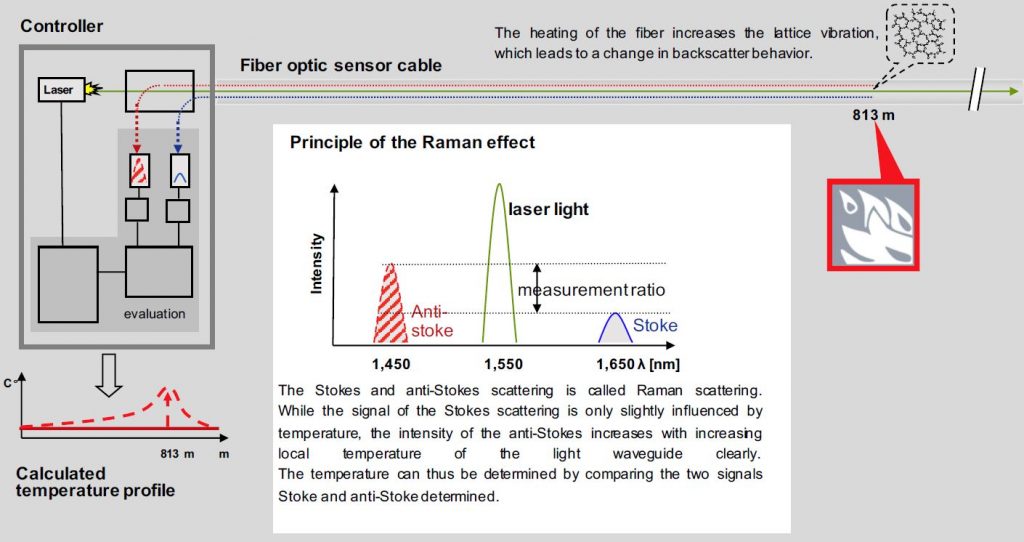A Distributed Temperature Sensing (DTS) system monitors temperature over long distances or across large surfaces, it could be along submarine or underground power cables. Instead of installing countless numbers of conventional sensors, Luna DTS systems use a single strand of optical fiber as sensor.
The fiber follows your installation and gives you the benefit of a continuous temperature profile in place of the more traditional single-point electrical temperature measurement.
How does it work?
The Luna Distributed Temperature Sensing systems use light, more specifically the Raman effect, to measure temperature.
In one end of the system, a laser sends a pulse of light into – and through – the optical fiber. We call this light pulse, the incident light. Most of the light travels along in the fiber but a small portion scatters at every point along the fiber.
Nearly all the scattered light has a wavelength identical to the incident light, called Rayleigh scattering. However, a small amount of the scattered light has a different wavelength – this is called the Raman effect.
The Raman effect is influenced by e.g. temperature. When the temperature changes somewhere along the optical fiber, the Raman scatter changes.
How to determine temperature and location?
Raman scattering consists of Stokes and anti-Stokes scattering. The Stokes scattering is light of a longer wavelength than the incident light whereas the anti-Stokes scattering is of a shorter wavelength.
DTS Raman measurement principle
While the Stokes scattering is only slightly influenced by temperature, the intensity of the anti-Stokes scattering increases with rising temperatures.
In case the temperature changes in a certain location, the DTS system calculates both the exact temperature and location.
The temperature is determined by measuring the difference between the Stokes and anti-Stokes intensity. This is done by a directional coupler in the laser source.
The location of the temperature change is determined by measuring the time it takes for the scatter to return to the source enabling you to pinpoint a very exact position of the change.
This all sounds complicated – and it is. However, rather than the single temperature snap-shot of a conventional temperature sensor, the DTS system provides a very precise, full temperature profile at the speed of light…!

